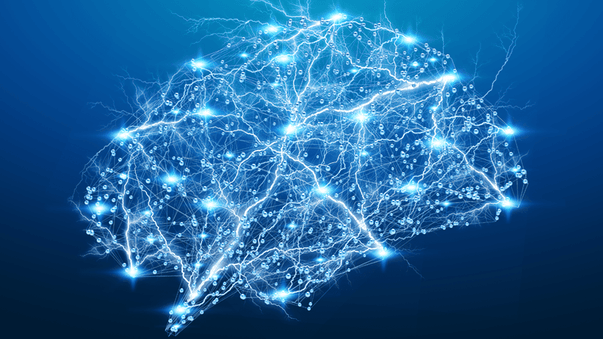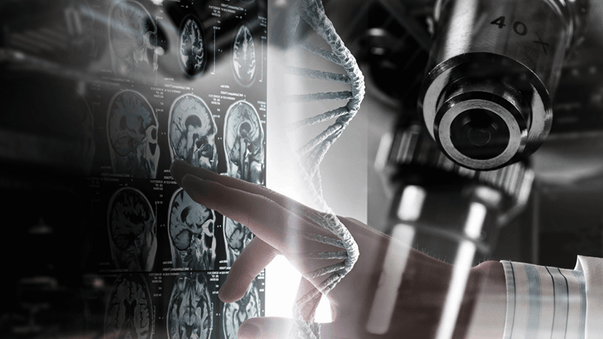Do Our Brains Use AI Deep Learning Algorithms?

Researchers at the Canadian Institute for Advanced Research (CIFAR), working in collaboration with Google Artificial Intelligence (AI) researchers, have unveiled intriguing parallels between wet neural networks in the brain and silicon neural networks used in AI research (see below), and developed a biologically realistic AI algorithm inspired by neurons in the brain’s neocortex, which is responsible for higher order thought.
“It’s just a set of simulations so it can’t tell us exactly what our brains are doing, but it does suggest enough to warrant further experimental examination if our own brains may use the same sort of algorithms that they use in AI,” said CIFAR Fellow Blake Richards.
Deep learning, an AI technique based on multi-layered neural networks where computing neurons in one layer send intermediate processing results to the higher level layer, has achieved spectacular results in pattern recognition and other early AI applications. See the recent book, Deep Learning, co-authored by CIFAR AI expert Yoshua Bengio, Program Co-Director for “Learning in Machines & Brains.”
In the new algorithm, simulated neurons in different layers collaborate, achieving deep learning.
“What we might see in the next decade or so is a real virtuous cycle of research between neuroscience and AI, where neuroscience discoveries help us to develop new AI and AI can help us interpret and understand our experimental data in neuroscience,” said Richards.
A review by scientists not involved in the research notes that the study “paves the way for future work that links biological networks to machine learning.”
In passing, recent research based on mathematical similarities between deep learning and fundamental theoretical physics suggests that deep neural networks in the quantum vacuum, the bare fabric of spacetime, could learn and think in mind-like ways.
Back to pedestrian reality, please note that recent research confirms that physical exercise reduces risk of developing diabetes. Other researchers have shown that probenecid, a drug long used to treat gout, may be able to improve heart function in adult patients who experience heart failure.
Deep Learning AI algorithms could be at work in the brain. Scientists at the Canadian Institute for Advanced Research (CIFAR) have developed an algorithm that simulates how deep learning, a neural network based technique used in Artificial Intelligence (AI) research, could work in our brains. A research paper published in December in eLife shows that certain mammalian neurons have the shape and electrical properties that are well-suited for deep learning, and describes biologically realistic ways for real brains to do deep learning.
Wearable sensor accurately monitors cardiac health. Engineers at Northwestern University have developed a new wearable, designed to be worn on the throat. The stretchable sensor, presented at the American Association for the Advancement of Science (AAAS) annual meeting in Austin, Texas, sticks directly to the skin, moving with the body and providing detailed health metrics including heart function, muscle activity and quality of sleep. According to the researchers, the device could be a game changer in the field of stroke rehabilitation.
Adaptive metalens works like the human eye. Researchers at the Harvard John A. Paulson School of Engineering and Applied Sciences (SEAS) have developed an adaptive metalens inspired by the human eye. The research, which could find important applications in computer vision, combines breakthroughs in artificial muscle technology with metalens technology to create a tunable metalens that can change its focus in real time, just like the human eye. Two studies published in Science Advances and Optics Express show that he metalens, which is essentially a flat, electronically controlled artificial eye, simultaneously controls for three of the major contributors to blurry images: focus, astigmatism, and image shift.
Promising research results toward treating Alzheimer's disease. Researchers at the Cleveland Clinic Lerner Research Institute have found that gradually depleting an enzyme called BACE1 completely reverses the formation of amyloid plaques in the brains of mice with Alzheimer's disease, thereby improving the animals' cognitive function. A study, published in The Journal of Experimental Medicine, raises hopes that drugs targeting this enzyme will be able to successfully treat Alzheimer's disease in humans.
Nanographene molecule for photodynamic cancer therapies. Chemists and biologists at Nagoya University and Boston College have developed a water-soluble, flexible and biocompatible "warped nanographene" molecule. A study published in Angewandte Chemie International Edition shows that the new nanographene molecule induces cell death when exposed to blue laser light. According to the researchers, further investigation could lead to new photodynamic therapies for cancer treatments.
Ultra-high resolution MRI could permit major advances in material science and biology. Scientists at the University of Waterloo have developed a new technique that brings magnetic resonance imaging (MRI) to the nanometer scale with unprecedented resolution. A research paper published in Physical Review X describes the new method, which combines the high spin sensitivity of nanowire-based magnetic resonance detection with high spectral resolution nuclear magnetic resonance (NMR) spectroscopy. The researchers are persuaded that the new high resolution MRI will open the door for major advances in understanding new materials, virus particles and proteins that cause diseases like Parkinson's and Alzheimer's.
Immune system regulator could enable new strategies against cancer and immune diseases. Researchers at the University of Turku have discovered a new regulator of the immune system, a key factor that controls development of regulatory T cells. A study published in Cell Reports shows that a protein called ‘Hypermethylated In Cancer 1’, or HIC1, serves as the key regulator of regulatory T cells controlling the expression of a large set of genes contributing to T cell function. According to the scientists, the discovery provides basis for new strategies for the treatment of both cancer and immune-mediated diseases.
More Articles
Don't miss a beat! In our Pulse Newsletter, Thrivous curates the most important news on health science and human enhancement, so you can stay informed without wasting time on hype and trivia. It's part of the free Thrivous newsletter. Subscribe now to receive email about human enhancement, nootropics, and geroprotectors, as well as company news and deals.
Read more articles at Thrivous, the human enhancement company. You can browse recent articles in Thrivous Views. See other Pulse Newsletter articles. Or check out an article below.
-
Watching Neural Activity Unfold in the Brain
“Now we can record the neural activity of many cells in a neural circuit and hear them as they talk ...
-
Futuristic Medicine for Healthy Life
Many biotech and health sciences news items released last week indicate that advanced biomedical research is advancing on all fronts, ...


